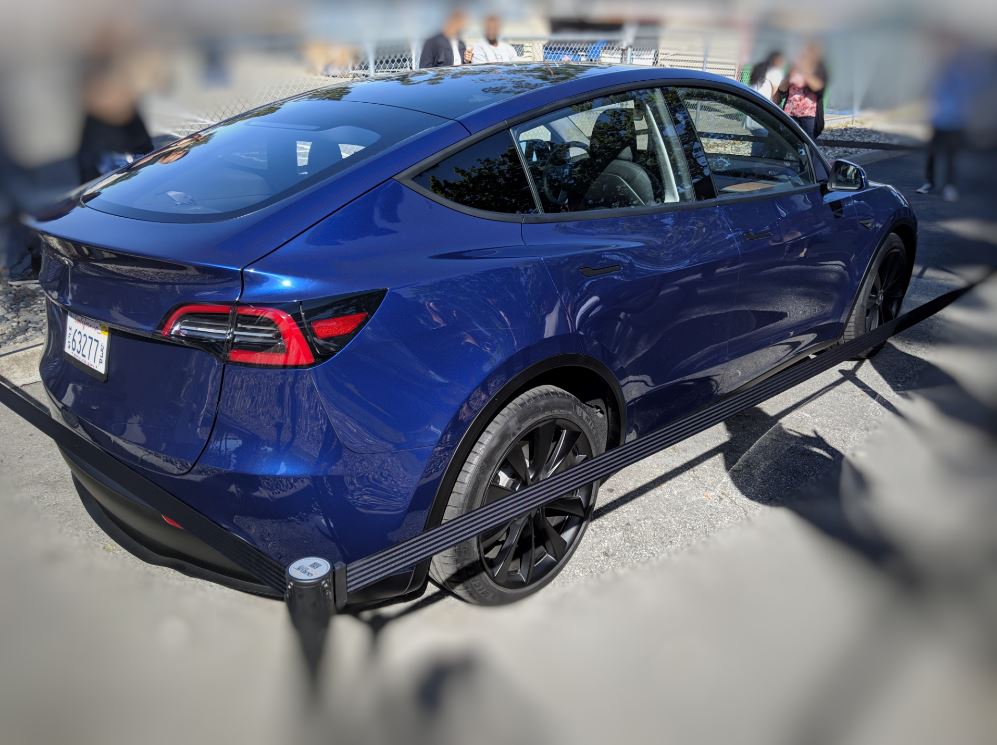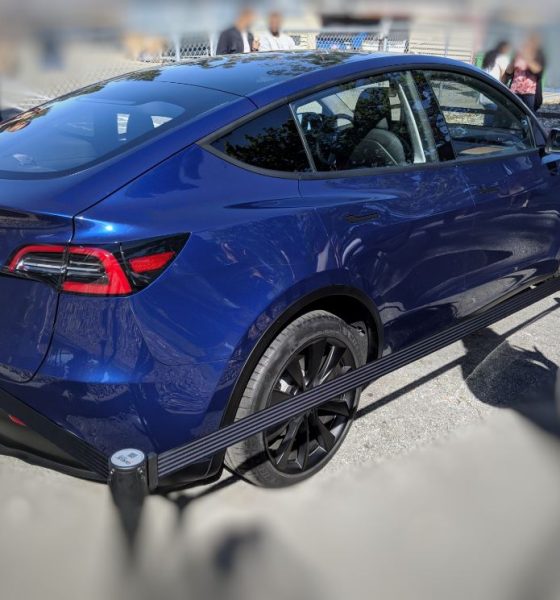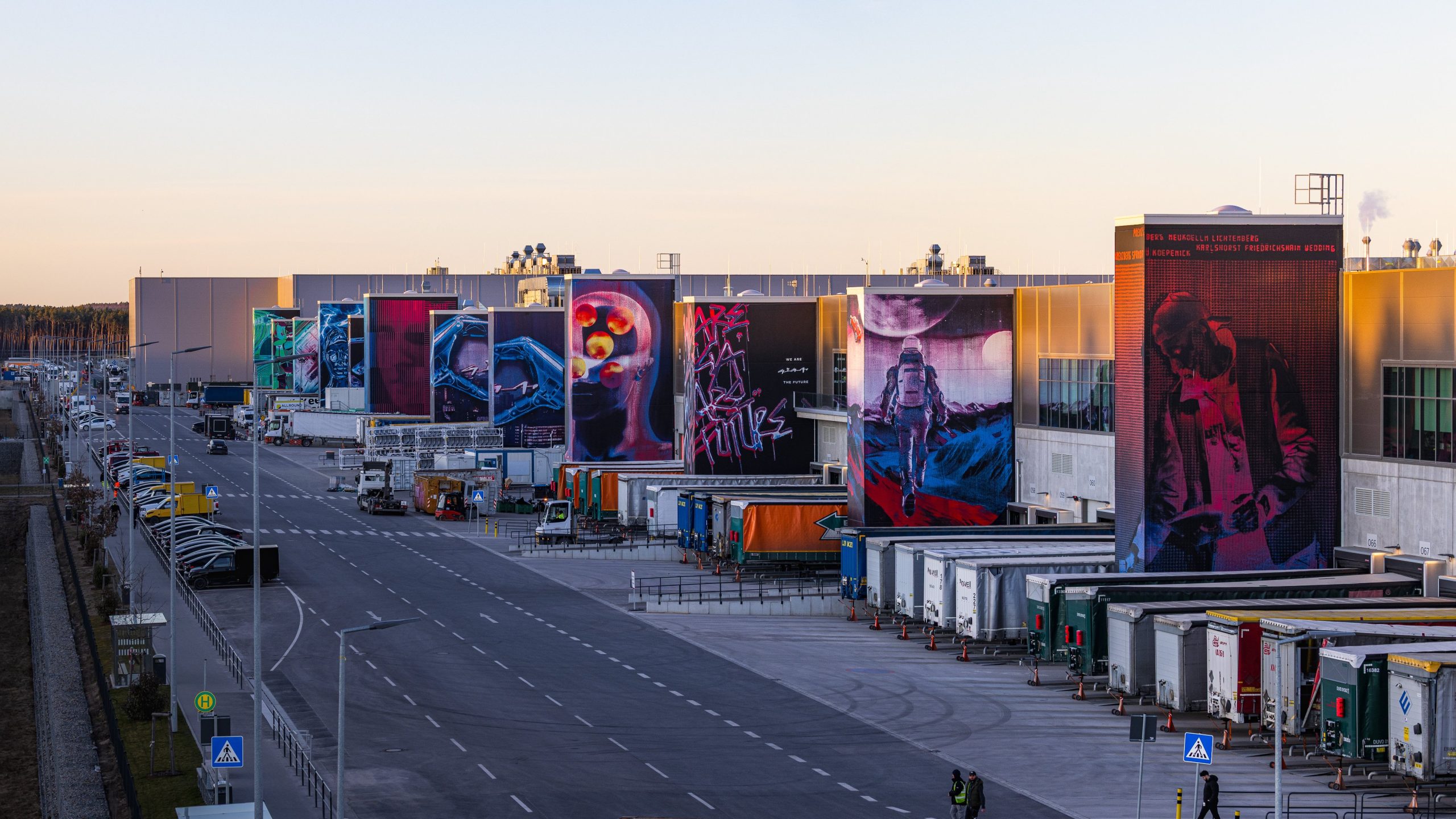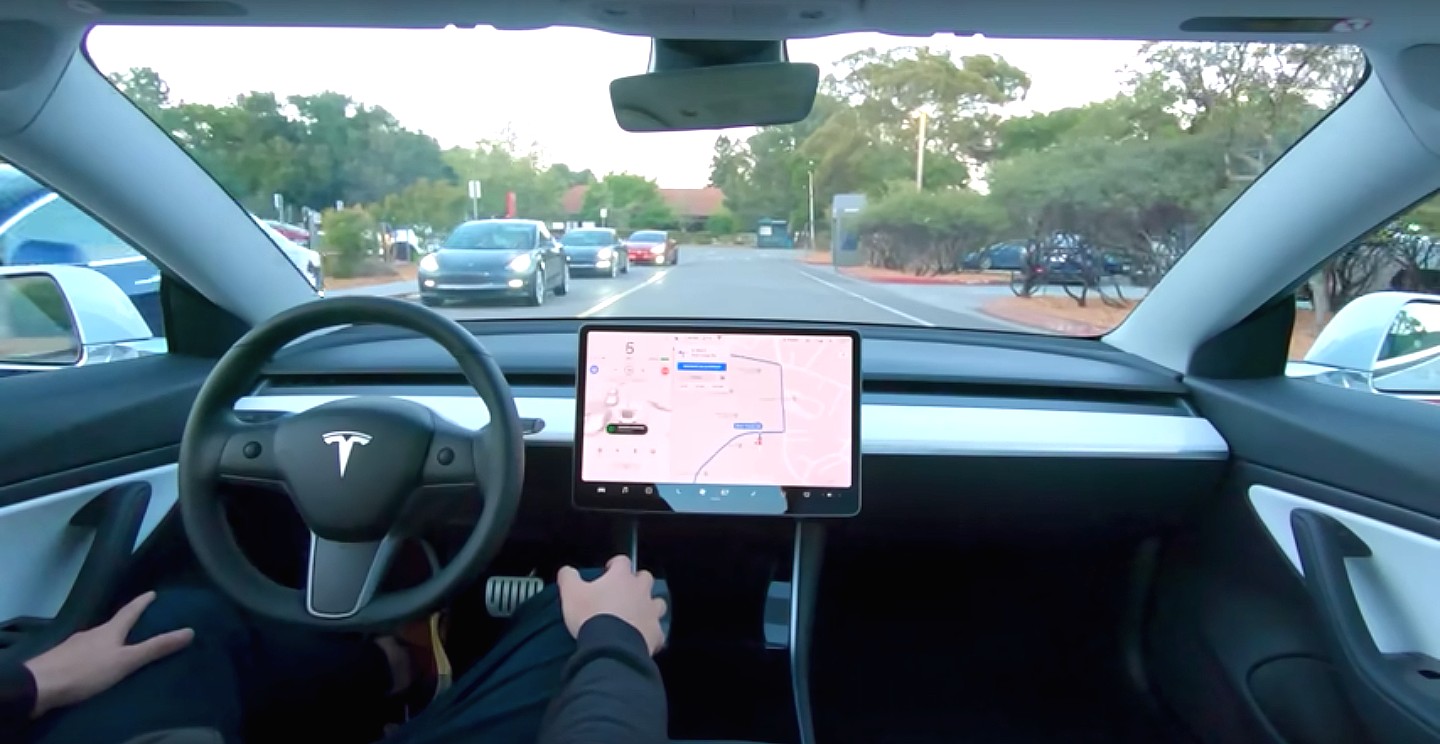

News
Tesla’s Elon Musk details Model Y manufacturing improvements, insight on design
Tesla CEO Elon Musk recently revealed improvements the all-electric car maker has made to its production process for the Model Y crossover SUV. In an interview on Ride the Lightning podcast, hosted by Ryan McCaffrey, Musk discussed lessons learned from Tesla’s prior transition from the Model S to the Model X as applicable to the Model Y, as well as decisions made from the vehicle’s outgrowth of the Model 3. He additionally provided some insight on the design decisions behind the Model 3, which also carry over to the Model Y’s design.
Musk and McCaffrey’s discussion about the Model Y production process began with the question, “What are the biggest lessons learned from the Model 3 program that you’re applying to the Model Y?” However, Musk indicated that a more relative learning comparison came from Tesla’s design of the Model X and its departure from the Model S.
“The Model X ended up being a radical departure from the S…with the Model Y, we wanted to avoid the technology bandwagon we had with the X. It should have been easy going from S to X, but instead, it was hell because of so many new technologies…It would be too risky to the company to do that with the Y,” Musk explained.
I'm celebrating episode 200 of Ride the Lightning, my weekly @Tesla podcast, in THE BEST way possible: a 1-hour interview with @elonmusk himself! 🥳 I can't wait to share our conversation with all of you! It airs this Sunday, June 2 @ 9am ET/6am PT on major podcast services. 🚗⚡️ pic.twitter.com/V0nFrU03Ir
— Ryan McCaffrey (@DMC_Ryan) May 30, 2019
The Model Y crossover needed to address the flexibility expected of vehicles in its class such as cargo capacity, seating for 6 or 7 people, and more ride height than a sedan. Tesla addressed these features while also keeping in mind the effect on battery range a larger vehicle might have, according to Musk.
“We tried to make the car as similar to the [Model 3] as possible except in the case where a change was necessary to achieve SUV functionality…[all] while still having a low drag coefficient and not increasing the frontal area too much,” he detailed. Overall, Musk concluded that CdA (automobile drag coefficient) and mass of the Model Y only affect 8-10% of the battery range when compared to the Model 3.
The design of Tesla’s Model Y and lessons learned from Model 3 production also led to some manufacturing improvements for the electric crossover. Musk detailed how the Model Y underbody was switched to aluminum casting instead of stamped steel and aluminum pieces, which greatly simplifies the moving parts involved in making the vehicle.
This change effectively means that initially, using two castings to make the structure will take the process from 70 parts to 4 (castings plus joiners), and once the “big” casting machine comes into operation, the process will have brought the process from 70 parts to 1 (casting only). Using casting over stamping reduces the weight of the Model Y, improves MHB (heat produced), lowers cost due to the smaller number of parts necessary, and significantly drops capital expenditure on robots.

As for the manufacturing location of the Model Y, Musk said the decision was not quite final, but the default place was Tesla’s factory in Fremont, California, with the runner-up being Gigafactory 1 in Sparks, Nevada. Producing the Model Y in Fremont would be the fastest way to bring the crossover SUV into production, according to Musk. “One choice isn’t natural over other,” he said. Freemont is producing the Model 3 and the two vehicles share 75% of their components, but Gigafactory 1’s location has a lower cost of living, meaning an overall better value for Tesla.
The similarities between the Model Y and Model 3 being what they are, Musk also discussed with McCaffrey some of the design decisions that initially went into creating the Model 3. In response to the question, “What’s the toughest design decision you had to make on Model 3?”, the CEO cited two primary factors that went into the midsize sedan’s creation: the touchscreen and the nose design.
Reducing the number of screens from two in the Model S to one in the Model 3 came with some pushback, Musk explained. However, he felt that owners would prefer an open view of the road, and everything needed while driving could be fit onto one screen.
This background brought up community rumors about a heads-up display (HUD) being included in Tesla’s vehicles. On the subject, Musk set the record straight – there was never any plan to include a HUD, nor will one be added in the future. He simply doesn’t like them, and the move to self-driving makes them pointless. “We discussed it, but I’ve tried various heads up displays and found they were annoying,” he said. “We felt the car would increasingly go to self-driving…As things are approaching autonomy, why project things you don’t even care about on the screen?”

Something that customers do care about, though, is the look of their car. Musk detailed the difficulties in making an attractive design for the Model 3, which wasn’t easy thanks to the lack of a front grill on the vehicle. “You don’t want to have the nose to look like Voldemort…You’ve got to get some character or it does not look good.”
Also mentioned was the decision to reduce the width of the Model 3 to 185 cm over the 195 cm of the Model S to help sell more cars in Japan. The country’s parking machines only accept cars up to 195.4 cm wide, which leaves very little wiggle room in the manufacturing process to meet. The change to 185 cm meant that any Tesla Model 3 could fit in any parking garage in Japan.
The Model Y is set to begin production in 2020, and reservations are currently open on Tesla’s website.
Listen to McCaffrey’s full Ride the Lightning podcast interview here.

News
Tesla Giga Berlin is still ramping production to meet Model Y demand: plant manager
Tesla Gigafactory Berlin has expanded to two full shifts, as per the facility’s plant manager, and a lot of it is due to Model Y demand.

Tesla Gigafactory Berlin has expanded to two full shifts, as per the facility’s plant manager, and a lot of it is due to Model Y demand. While registrations in some countries such as Sweden have fallen sharply this year, the company’s sales in other key territories have been rising.
Giga Berlin shifts to two shifts
Giga Berlin factory manager André Thierig told the DPA that the facility has been running two shifts since September to manage a surge in global orders. And due to the tariff dispute with the United States, vehicles that are produced at Giga Berlin are now being exported to Canada.
“We deliver to well over 30 markets and definitely see a positive trend there,” Thierig said.
Despite Giga Berlin now having two shifts, the facility’s production still needs to ramp up more. This is partly due to the addition of the Tesla Model Y Performance and Standard, which are also being produced in the Grunheide-based factory. Interestingly enough, Giga Berlin still only produces the Model Y, unlike other factories like Gigafactory Texas, the Fremont Factory, and Gigafactory Shanghai, which produce more than one type of vehicle.
Norway’s momentum
Norway, facing an imminent tax increase on cars, has seen a historic spike in Tesla purchases as buyers rush to secure deliveries before the change takes effect, as noted in a CarUp report. As per recent reports, Tesla has broken Norway’s all-time annual sales record this month, beating Volkswagen’s record that has stood since 2016.
What is rather remarkable is the fact that Tesla was able to achieve so much in Norway with one hand practically tied behind its back. This is because the company’s biggest sales draw, FSD, remains unavailable in the country. Fortunately, Tesla is currently hard at work attempting to get FSD approved for Europe, a notable milestone that should spur even more vehicle sales in the region.
News
Tesla launches crazy Full Self-Driving free trial: here’s how you can get it

Tesla is launching a crazy Full Self-Driving free trial, which will enable owners who have not purchased the suite outright to try it for 30 days.
There are a handful of stipulations that will be needed in order for you to qualify for the free trial, which was announced on Thursday night.
Tesla said the trial is for v14, the company’s latest version of the Full Self-Driving suite, and will be available to new and existing Model S, Model 3, Model X, Model Y, and Cybertruck owners, who will have the opportunity to try the latest features, including Speed Profiles, Arrival Options, and other new upgrades.
🚨 Tesla is launching a free 30-day trial of Full Self-Driving in North America for owners.
It includes every model, but you need v14.2 or later, and you cannot have already purchased the suite outright. https://t.co/8CNmxxOkVl
— TESLARATI (@Teslarati) November 27, 2025
You must own one of the five Tesla models, have Full Self-Driving v14.2 or later, and have an eligible vehicle in the United States, Puerto Rico, Mexico, or Canada.
The company said it is a non-transferable trial, which is not redeemable for cash. Tesla is reaching out to owners via email to give them the opportunity to enable the Full Self-Driving trial.
Those who are subscribed to the monthly Full Self-Driving program are eligible, so they will essentially get a free month of the suite.
Once it is installed, the trial will begin, and the 30-day countdown will begin.
Tesla is making a major push to increase its Full Self-Driving take rate, as it revealed that about 12 percent of owners are users of the program during its recent earnings call.
Tesla CFO Vaibhav Taneja said during the call:
“We feel that as people experience the supervised FSD at scale, demand for our vehicles, like Elon said, would increase significantly. On the FSD adoption front, we’ve continued to see decent progress. However, note that the total paid FSD customer base is still small, around 12% of our current fleet.”
Earlier today, we reported on Tesla also launching a small-scale advertising campaign on X for the Full Self-Driving suite, hoping to increase adoption.
Tesla Full Self-Driving warrants huge switch-up on essential company strategy
It appears most people are pretty content with the subscription program. It costs just $99 a month, in comparison to the $8,000 fee it is for the outright purchase.
News
Tesla Full Self-Driving warrants huge switch-up on essential company strategy

Tesla Full Self-Driving has warranted a huge switch-up on an essential company strategy as the automaker is hoping to increase the take rate of the ADAS suite.
Unlike other automotive companies, Tesla has long been an outlier, as it has famously ditched a traditional advertising strategy in favor of organic buzz, natural word-of-mouth through its production innovation, and utilizing CEO Elon Musk’s huge social media presence to push its products.
Tesla has taken the money that it would normally spend on advertising and utilized it for R&D purposes. For a long time, it yielded great results, and ironically, Tesla saw benefits from other EV makers running ads.
Tesla counters jab at lack of advertising with perfect response
However, in recent years, Tesla has decided to adjust this strategy, showing a need to expand beyond its core enthusiast base, which is large, but does not span over millions and millions as it would need to fend off global EV competitors, which have become more well-rounded and a better threat to the company.
In 2024 and 2025, Tesla started utilizing ads to spread knowledge about its products. This is continuing, as Full Self-Driving ads are now being spotted on social media platforms, most notably, X, which is owned by Musk:
NEWS: Tesla is running paid advertisements on X about FSD (Supervised). Here’s an ad they started running yesterday: pic.twitter.com/IHVywLMyTd
— Sawyer Merritt (@SawyerMerritt) November 25, 2025
Interestingly, Tesla’s strategy on FSD advertising is present in Musk’s new compensation package, as the eleventh tranche describes a goal of achieving 10 million active paid FSD subscriptions.
Full Self-Driving is truly Tesla’s primary focus moving forward, although it could be argued that it also has a special type of dedication toward its Optimus robot project. However, FSD will ultimately become the basis for the Robotaxi, which will enable autonomous ride-sharing across the globe as it is permitted in more locations.
Tesla has been adjusting its advertising strategy over the past couple of years, and it seems it is focused on more ways to spread awareness about its products. It will be interesting to see if the company will expand its spending even further, as it has yet to put on a commercial during live television.
We wouldn’t put it out of the question, at least not yet.









